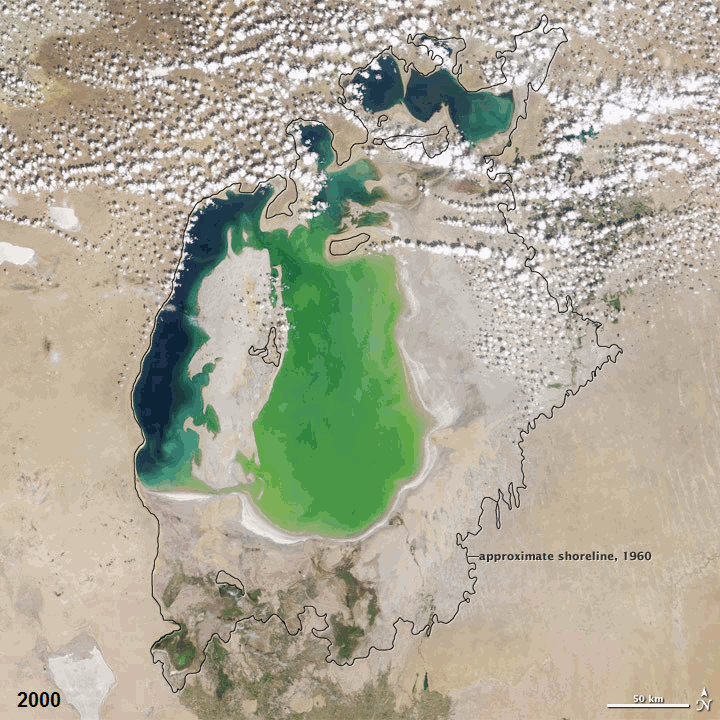Maps of Earth’s distant past have the strange ability to shock by their sheer alienness. Consider this one showing the Paratethys Sea. It’s the largest lake the world has ever seen. You could have sailed from what is now Austria to what is now Turkmenistan—if there had been boats back then, or people.
An uncomfortable truth
The idea of a body of water this vast yet now completely vanished brings home an uncomfortable truth: The physical parameters or our world—continents and oceans, mountains and lakes—appear fixed only because our own lives are so infinitesimally short, measured against geological eras.

Paratethys formed about 34 million years ago, toward the end of the Eocene epoch. It was connected to the high seas until around 12 million years ago, when the collision of the African and European tectonic plates closed it off from the Mediterranean and turned it into a self-contained lake.
At its largest, Paratethys had a surface area of about 2.8 million square km (more than a million square miles), and it contained 1.77 million cubic km (425,000 cubic miles) of water. In area, that was slightly larger than today’s Mediterranean Sea, but in volume only about a third. So, Paratethys was a comparatively shallow sea. Still, it contained 10 times more water than all of today’s lakes combined.
The big salty drought
Shallow and shut off, Paratethys eventually started to shrink. Much of the lake evaporated between 9.8 and 7.7 million years ago, with water levels dropping by as much as 250 meters (820 feet) during the most severe period, known as the Great Khersonian Drying. Losing 70 percent of its surface area and 30 percent of its volume, the Paratethys Sea shrank to what roughly corresponds to today’s Black Sea.
This “extreme drying” turned a formerly rich and varied ecosystem, blessed with a subtropical climate for much of its existence, into a wasteland.
The big salty drought killed off much of the endemic flora and fauna that had developed in this closed environment over several million years, such as dwarf seals, dolphins, and whales. The latter included Cetotherium riabinini, which, at just 3 meters (10 feet), was the smallest whale species ever.
 Dwarf whale Cetotherium riabinini, compared with human size. Gol’Din en Lena Godlevska/University of Utrecht/Wikimedia
Dwarf whale Cetotherium riabinini, compared with human size. Gol’Din en Lena Godlevska/University of Utrecht/WikimediaOne ecosystem’s loss is another’s gain. The desiccation and salination of the Paratethys Sea drove a number of other species to migrate to the more welcoming plains of Africa—notably the ancestors of today’s giraffes and elephants.
Our planet’s plumbing
In his doctoral dissertation, Dan Palcu showed the importance of sea straits to the many catastrophes—droughts, floods, and more—that befell the Paratethys realm: “Small changes in climate or in sea level can change the behavior of the straits and then lead to environmental change and even extinction events.”
One example was a mega-flood that temporarily transformed the Mediterranean into a brackish lake, a scenario known to earth scientists as the Lago-Mare event. “We conclude that sea straits are one of the most sensitive parts of our planet’s plumbing, likely to disrupt the balance between seas and ocean and trigger environmental crises in the context of sea level and climate change,” says Palcu.
Aral Sea shrinking has pedigree
What remained of the Paratethys Sea would continue to shrink, including via a giant waterfall that poured into the Mediterranean between 6.9 and 6.7 million years ago. Various fragments, such as the Panonnian Sea, eventually disappeared.

Today, the remnants of the world’s largest lake are to be found in three fragments, all pretty substantial in their own right: the Black Sea, precariously connected to the open ocean via the Bosporus Strait; the Caspian Sea, which is the current holder of the “world’s largest lake” title; and the Aral Sea, on the brink of disappearing via “extreme drying,” just like its ancient parent—although this time mainly due to human intervention.
For an in-depth exploration of the Paratethys Sea, see Dan Palcu’s dissertation: “The Dire Straits of Paratethys: Dating, matching and modeling connectivity between the Miocene seas of Eurasia.”
This article originally appeared on Big Think, home of the brightest minds and biggest ideas of all time. Sign up for Big Think’s newsletter.





